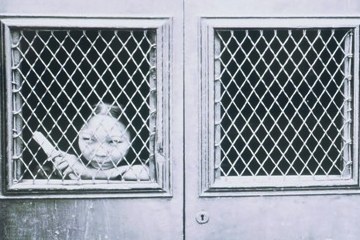Asian-American History
Immigrants from China first arrived in 1849 to chase the California Gold Rush. A second wave of Asian immigration began after immigration reform in 1965. Asian-American communities have arrived from a diverse range of countries, such as India, Vietnam, China, Taiwan, South Korea, and the Philippines.
Recommended Reading
- Xiaojian Zhao - The New Chinese America: Class, Economy, and Social Hierarchy
- Elaine H. Kim and Eui-Young Yu - East to America: Korean American Life Stories
- James Freeman - Hearts of Sorrow: Vietnamese-American Lives
- Padma Rangaswamy - Namasté America: Indian Immigrants in an American Metropolis
- Veltisezar Bautista - The Filipino Americans from 1763 to the Present: Their History, Culture, and Traditions
- Stuart Creighton Miller -- Benevolent Assimilation: The American Conquest of the Philippines, 1899-1903
- Rick Perlstein - Nixonland: The Rise of a President and the Fracturing of America
Chinatown's Sex Slaves - Human Trafficking and San Francisco's History
In the 1800s, the prostitution of Chinese women in San Francisco rested upon a foundation of human trafficking, organized crime, and outright slavery.
Timeline
- c.12000 B.C. - The first people arrive in what is now Alaska over the Bering Strait (then an isthmus) -- although some sources dispute this claim.
- c.300 - Polynesian settlers arrive in Hawaii and establish villages, astoundingly traveling in small canoes over thousands of miles of open ocean.
- 1763 - A group of Filipino sailors establish a settlement at Saint Malo, Louisiana, deep in the bayous. For many decades they remain isolated from most of society.
- 1849 - The California Gold Rush attracts thousands of Chinese immigrants to California. Largely excluded from white society, they create the Chinatown enclave in San Francisco over the ensuing decades.
- 1863-1869 - An estimated 11,000 Chinese laborers work on the western half of the First Transcontinental Railroad, stretching from Oakland, California to the center of Utah.
- 1882 - The Chinese Exclusion Act is passed, virtually ending Chinese and other Asian immigration to the United States for eighty years.
- 1893 - Queen Lili'uokalani of Hawaii is overthrown by a group of European and American business leaders, against the wishes of most natives. Hawaii is then annexed to the United States in 1898.
- 1898 - After the Spanish-American War, the Philippines become an American colony. A guerilla struggle ensues on those islands that lasts into the 1900s and claims the lives of 4,165 American soldiers.
- 1942 - A policy of Japanese internment begins in response to the attacks on Pearl Harbor. 110,000 Japanese-Americans are interned in desert camps until the end of World War II.
- 1965 - Increased Mexican and Asian immigration is spurred by the US Immigration and Nationality Act of 1965, having a particular effect on the demographics of the West Coast.
- 1973 - Enter the Dragon is released less than a month after the untimely death of Bruce Lee, a martial arts icon.
- 1975 - Over 100,000 Vietnamese refugees flee to the United States after the victory of Ho Chi Minh and North Vietnam.
- 1997 - At the age of 21, Tiger Woods becomes the youngest player in history to win the Masters golf tournament.
- 2009 - Asians contribute a plurality of immigrants to the United States for the first time.
ERAS:
Pre-Contact - Colonial - Revolutionary - Antebellum - Civil War - Gilded Age - Depression/World War II - Modern
PEOPLE:
American Indian - Anglo/Scottish - Black - Hispanic - Women - Asian - LGBT - Irish - Jewish - Children
